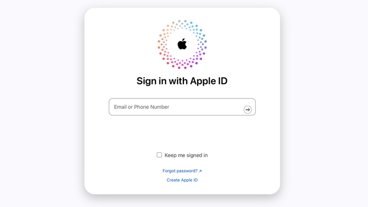Apple already testing NFC-enabled iPhone prototypes - rumor
Citing unnamed sources, TechCrunch reported Tuesdsay that Apple has already built NFC-enabled iPhone prototypes using hardware from NXP Semiconductor. The report alleged that Apple is already testing mobile payments for use in a future iPhone.
"The existence of prototypes would almost surely suggest that Apple will include NFC in iPhone 5, or whatever Apple decides to call its next iPhone," author Steve Cheney wrote. The report also speculates that NFC could be used for high-speed wireless data transfers and proximity-based features between compatible Apple devices.
This week, it was revealed that Apple hired Benjamin Vigier, who has been working with NFC technology since 2004. His previous role was project manager for mobile wallet, payment and NFC at mFoundry, a company that specializes in mobile payments.
Vigier's official title at Apple is product manager of mobile commerce.
Support for RFID or a number of other NFC technologies could allow a variety of "touchless" technologies, ranging from swipe payments where an iPhone could be used to pay for items at checkout, or sensing of information from kiosks and objects.
Apple's behind-the-scenes interest in NFC is well established, and has turned up in numerous patent applications filed by the company. A recent filing from July described a system that would allow users to rely on NFC functionality in the iPhone to research products and quickly find helpful information, such as an instruction manual.
Last year, reports suggested that Apple had tested Radio Frequency Identification, or RFID, in prototype iPhones. The technology allows a device to sense embedded chips in nearby objects without making direct contact or without using visible light, like a barcode reader.
 Katie Marsal
Katie Marsal










 Mike Wuerthele
Mike Wuerthele

 Malcolm Owen
Malcolm Owen
 Chip Loder
Chip Loder

 William Gallagher
William Gallagher
 Christine McKee
Christine McKee
 Michael Stroup
Michael Stroup







29 Comments
Just another way to encourage us to spend our money quickly, whenever and wherever.
Once Iphones can be used for financial transactions, can Apple banking be far behind?
Is this really much different from an RFID/NFC chip implanted in your body? I see Apple Store Big Brother NFC RFID SPY CHIP PROTESTS and PICKETING Coming! Don't think I am kidding... Has Steve Jobs sold-out to the NWO?



Following the news that Apple recently hired an expert on near field communications, a new rumor suggests that the company is already testing a prototype iPhone that could be used for short-range wireless activities such as making in-store transactions.
prototype, eh? is that jason chen i see in the corner?
Once Iphones can be used for financial transactions, can Apple banking be far behind?
Maybe, maybe not.
Apple is a hardware company. They use content and services to drive sales of their high-margin hardware. How do you envision that a retail banking arm would help them drive hardware sales and differentiate them from their competitors? Note that this would probably have to be a worldwide operation, not just something limited to the United States.
What would motivate Apple to set up an entirely different business with much different regulations and practices?